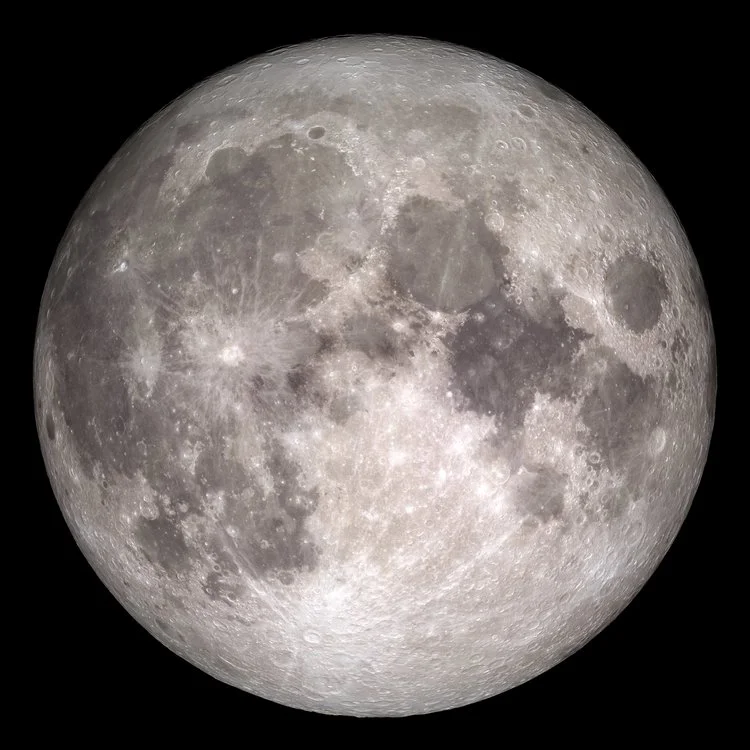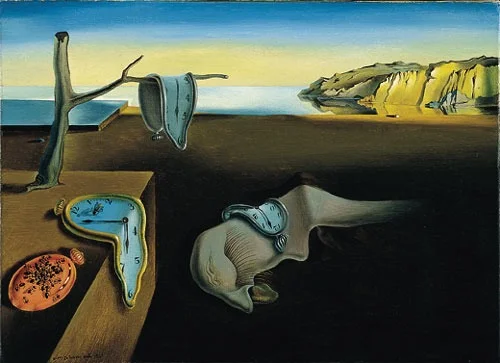In this section, we discuss the various different kinds of mechanical waves: transverse, longitudinal, and some waves which have both of those aspects. Mechanical waves are disturbances which propagate through a medium and transport energy from one region of space to another. In this section, we'll start off with a qualitative description of what mechanical waves.
Rotational Kinematics
There are many different ways to describe rotational motion, but the most convenient way of doing so is to replace the role played by the position vector in linear motion with an angular coordinate. This will give us a way of describing the rotational motion of rigid bodies where we do not have to worry about the individual positions of every particle.
Introduction to Rotational Kinetic Energy
Rotational kinetic energy is not a new concept: it is just the sum of all the translational kinetic energies of all the particles comprising a system. Just like how translational kinetic energy is a very important concept in simplifying many problems related to linear motion, the same is true of rotational kinetic energy for rotational motion. Very often, in complicated situations, it is much simpler to use energy concepts than concepts related to force or torque.
Torque
We'll see that torque, rotational inertia and rotational acceleration play the same role in rotational mechanics as force, mass, and linear acceleration play in linear motion. Torque is, roughly speaking, how good of a job a given applied force will do at changing the, otherwise, uniform rotational motion; rotational inertia is how much an object resists having its rotational motion changed; and rotational acceleration captures how much the rotational motion is changing from its state of uniform rotational motion. In this section, we'll spend a lot of time focusing on developing a qualitative understanding of torque. We shall also quantify torque and end the section by deriving the rotational analogue of Newton's second law.
Work: Measure of Energy Transfer
What is work? Work is a measure of how much total energy is transferred into or out of an object. In this lesson we'll see that by calculating the work done on an object (how much energy is transferred into or out of it), we can predict the object's future state of motion.
The Dependency of theta in the dot product
In this lesson, we'll discuss how the total work \(W\) on an object depends on the angle \(\theta\) at which the force \(\vec{F}\) is applied to the object.
Work done by Earth's Gravity
What happens if the only effect of the work done on an object is to change its height without changing its speed? The answer is that the work done on the object only changes in potential energy. In this lesson, we'll consider the work done by Earth's gravity on an object whose height above the ground changes but whose speed stays the same.
Work-Kinetic Energy Theorem
Work is energy transfer. But what happens when work is done on an object such that its height above the ground doesn't change? The answer is that only kinetic energy is transferred into or out of the object. And since work is the total amount of energy transfered into or out of the object, it therefore follows that the work is just equal to the object's change in kinetic energy.
Genesis of the Elements
During the 20th century, scientists discovered the genesis of the elements in the periodic table. Einstein's theory of gravity precipitated a revolution and renascence period in cosmology; it transformed our picture of the large-scale universe. We learned that, contrary to the ideas which has prevailed for centuries since Newton's time, the universe is actually expanding and that in some distant epoch—the earliest moments of the young universe—all of the matter and energy in the universe must have been on top of each other and concentrated into a single, very small amount of space no bigger than the size of a grape fruit. The temperatures and pressures were so extreme in this early universe that hydrogen and helium could be formed. Later, the universe cooled and vast aggregates of atoms condensed into galaxies and stars. In the latter-half of the 20th century, we learned that the heavier elements in the periodic table were created in the nuclear furnaces and death-roes of the stars. We really are made of star stuff!
Snowball Earth
The Proterozoic Eon is a sweep of time beginning when the Earth was 2.5 billion years old and ending when the Earth was 542 million years. During the first 500 million years, cyanobacteria and photosynthesis were invented which oxygenated the world. The proceeding one billion years was a time of enigmatic calm as the Earth did not change much. But in the last roughly 350 million years, the Earth's systems were spun into a whirlwind. The Earth experienced one of the most dramatic series of ice ages in its history and turned into a giant, white, ice ball. But after these ice ages ended, a second great oxidization event occurred. The last step was taken in the march from the simple to the complex: there was finally enough oxygen to support large, multi-cellular creatures and the Ediacaran fauna emerged.
Early Earth History
After ancient stars exploded, their remnants conglomerated through gravity to one day form a place called Earth. Primordial Earth was a giant, red ball of magma and smoldering rocks; it was hellish and ablaze with erupting volcanoes and fiery skies. But over time hails of comets and asteroids bombarded the Earth to form the oceans causing Earth's outer layer to cool and turn grey; those heavenly bodies also seeded the oceans with rich organic chemistry which, somehow, eventually turned into the first microbe. Nearly one billion years later, photosynthesis was invented—this oxygenated the world, a little, and was the first step in the march towards the emergence of large, complex, multi-cellular organisms.
Colonizing the Moon
In this article, we discuss Moon colonization: the best spots to build infrastructure on the Moon; the advantages of going there; how the Moon's resources could be utilized; and the prospect of an immense lunar city.
Colonizing the Asteroids and Comets of our Solar System
The extraordinary Carl Sagan long ago envisioned in his book, Pale Blue Dot, humanity eventually terraforming other worlds and building settlements on the asteroids and comets in our solar system. He imagined that these little worlds could be perhaps redirected and manuevered—used as little rocky "space ships"—in order to set sail for the stars. In this article, we discuss some of the techniques which could be used towards this telos.
Introduction to Einstein's Theory of General Relativity
General Relativity is hailed by many as one of the greatest achievements of human thought of all time. Einstein's theory of space, time, and gravity threw out the old Newtonian stage of a fixed Euclidean space with a universal march of time; the new stage on which events play out is spacetime, a bendable and dynamic fabric which tells matter how to move. This theory perhaps holds the key to unlocking H. G. Wells time machine into the past; according to Kip Throne, it will pave the way towards the next generation of ultra-powerful telescopes which rely on gravitational waves; and it also perhaps holds the key to breaking the cosmic speed limit and colonizing the Milky Way galaxy and beyond in a comparatively short period of time.
Superconductors: the Future of Transportation and Electric Transmission
Superconductors are the key to unlocking the future of transportation and electrical transmission. They enable the most efficient approaches to these industrial processes known to present science. A maglev vehicle, to borrow Jeremy Rifkin's wording, will shrink the dimensions of space and time by allowing distant continental and inter-continental regions to be accessed in, well, not much time at all. But superconductors also offer unprecedented efficiency: they eliminate the problem of atoms colliding with other atoms and would allow vehicle to "slide" across enormous distances with virtually no loss of energy and it would allow a loop of current to persist longer than the remaining lifetime of the universe. Much of the damage accumulated in the components of vehicles can, in some way or another, be traced to the friction against the road; maglev transportation circumvents this issue.
Thermodynamics and the "Arrow" of Time
The second law of thermodynamics specifies the arrow of time—the direction in which the flow of time runs. Before the discovery of the laws of thermodynamics, there was nothing about classical mechanics which did not allow time to run both ways. Just as a cup could fall on the floor and shatter into many pieces, it was also conceivable that a shattered cup could spontenously resemble and climb back on top of the table without violating the laws of energy and momentum conservation. It was not until the discovery of the second law of thermodynamics that the laws of physically finally declared that events can only happen in one direction, thereby giving time a sense of direction.
Exponential Growth of Information Technology
In this short article, we discuss that the character of an exponential function is such that when it is viewed linearly, it'll start off very gradual and then suddenly "blow up." This character of exponential functions is the reason why the number of internet users seemed to blow up out of nowhere and why the cost and size of computer chips have diminished so rapidly in such a short period of time. But when viewed on a logarithmic scale, nothing appears to "blow up" and behavior, which looks rather wild from a linear view, seemed inevitable when viewed logarithmically; this allowed Ray Kurzweil to predict that the internet would one day have billions of users in a time when perhaps only a few thousand people had access to the internet.
Calculating the Wavefunction Associated with any Ket Vector
In this lesson, we'll derive an equation which will allow us to calculate the wavefunction (which is to say, the collection of probability amplitudes) associated with any ket vector \(|\psi⟩\). Knowing the wavefunction is very important since we use probability amplitudes to calculate the probability of measuring eigenvalues (i.e. the position or momentum of a quantum system).
Schrodinger's Time-Dependent Equation: Time-Evolution of State Vectors
Newton's second law describes how the classical state {\(\vec{p_i}, \vec{R_i}\)} of a classical system changes with time based on the initial position and configuration \(\vec{R_i}\), and also the initial momentum \(\vec{p_i}\). We'll see that Schrodinger's equation is the quantum analogue of Newton's second law and describes the time-evolution of a quantum state \(|\psi(t)⟩\) based on the following two initial conditions: the energy and initial state of the system.
Overview of Single-Variable Calculus
In this lesson, we'll give a broad overview and description of single-variable calculus. Single-variable calculus is a big tool kit for finding the slope or area underneath any arbitrary function \(f(x)\) which is smooth and continuous. If the slope of \(f(x)\) is constant, then we don't need calculus to find the slope or area; but when the slope of \(f(x)\) is a variable, then we must use a tool called a derivative to find the slope and another tool called an integral to find the area.





















